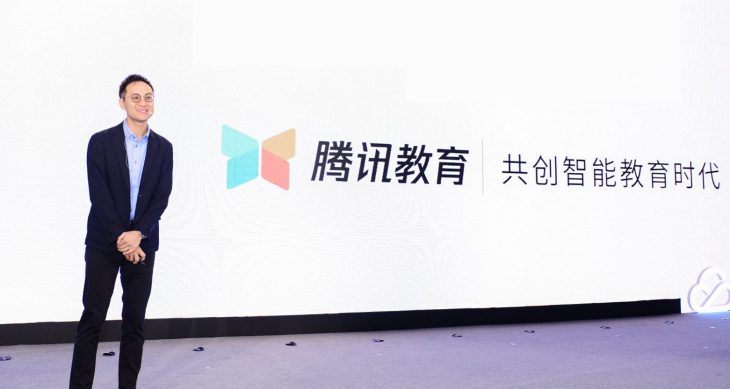
When Tencent announced it had formed a new education brand this week, the internet giant wasn’t just flexing its muscles to conquer China’s booming online education sector. The new initiative is also an early result of Tencent’s long plan to foster more internal collaboration at a time when its core businesses, the lucrative video gaming segment and the billion-user WeChat, are under attack.
Called “Tencent Education,” the new brand consists of 20 products across all six of the firm’s business groups, announced executive senior vice president Dowson Tong at the company’s annual ecosystem summit on Wednesday. According to Tong, Tencent has over the years served some 15,000 schools and 70,000 educational institutes, giving it a reach of more than 300 million users in the sector.
What this means is when it comes to making education products, there will be more teamwork among Tencent divisions, from the one overseeing WeChat to the entertainment-focused unit operating some of the world’s most played games. The catalog of services ranges from face recognition technology to monitor students during class time (I know, it makes me cringe) to personal development classes for adults.
This level of cross-department cooperation had been rare at Tencent until recently. For years, the Shenzhen-based company fostered a competitive culture it compares to horse races. On the one hand, internal rivalry spawns innovation. The success of WeChat has demonstrated Tencent’s willingness to let a new product eat into its legacy social network QQ. The strategy doesn’t always work, though. To contain TikTok’s rise, Tencent has churned out a dozen short-video apps, but none has reached their rival’s supremacy.
Competition, on the other hand, produces internal silos and hurts collaboration. This is a critique that has often come at Tencent, although Tong refuted the notion in a recent interview with local news outlet Yicai, saying that Tencent actually had a history of keeping a data system for internal collaboration.
Meanwhile, its rival Alibaba has gotten more credit for structuring business units under one cooperative umbrella. When founder Jack Ma set up an “underlying unified data, safety, risk management and technology foundation” almost seven years ago, his goal was to tear down “internal corporate walls.” The integration was targeted at customers, as well. For instance, Ma envisioned a future where a merchant on Alibaba’s consumer-facing marketplace Taobao would directly source from 1688.com, its business-to-business e-commerce arm.
Tencent is undergoing a similar transformation. In October, the company announced a sweeping reorganization that saw it knit together a few disparate business lines primed for synergies. Take the Platform and Content Group. The newly minted group consolidated all non-WeChat social and content services — spanning QQ, an app store, a web browser, two news apps, an esports platform and several video services — under one single division.
Historically, Tencent has derived a bulk of its income from video games and a handful of popular social media apps. But the cards are increasingly stacked against these ventures as China exerts more control over the gaming sector and ByteDance seizes more online attention, so part of the October reorg was aimed at fending off imminent competition from new rivals by better utilizing internal resources, as it’s the case with PCG.
The other part of the agenda is set for what’s further down the road. Tong told Yicai that the time is ripe for “the industrial internet,” a buzzword in China that refers to the upgrade of traditional industries with technology. Tencent wants to be a leading force in the revolution, and the plan is to open up its technology to other enterprises, as Tencent has done through the education initiative.
“In the age of the industrial internet, I think the ultimate job is to be open… so we are opening a lot of the technologies we’ve accumulated in the past and integrating them for the use of other companies,” said Tong.
[“source=techcrunch”]

















